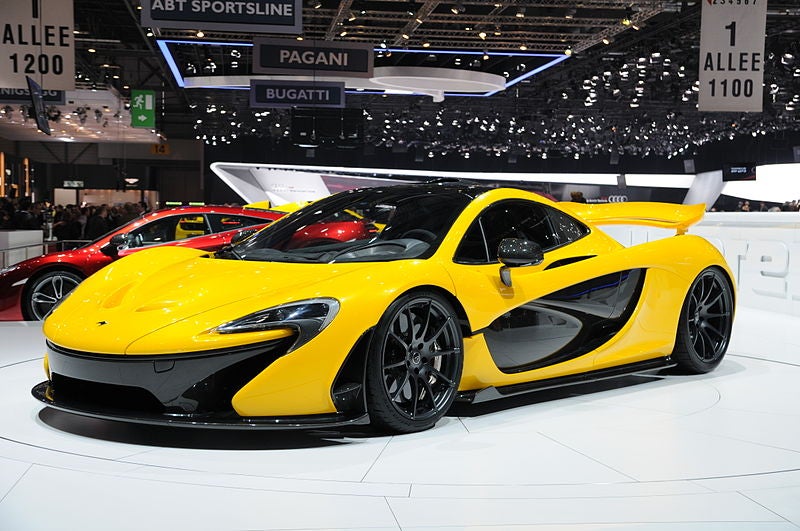 "GhostZ" (GhostZ)
"GhostZ" (GhostZ)
04/02/2015 at 15:49 Filed to: None
 0
0
 14
14
 "GhostZ" (GhostZ)
"GhostZ" (GhostZ)
04/02/2015 at 15:49 Filed to: None |  0 0
|  14 14 |

Why hasn't someone made an exhaust turbine that generates electricity for the battery, instead of having to use high friction compressor/impellers in a turbo to add power...
As in, instead of using exhaust gases to power a turbo, why not use them for added charge in a hybrid system? The biggest advantage here being that you'd not require nearly as much heat management equipment to deal with the compressed air into the engine.
 AddictedToM3s - Drives a GC
> GhostZ
AddictedToM3s - Drives a GC
> GhostZ
04/02/2015 at 15:53 |
|
I have no actual experience and a feeble understanding of turbines and engineering but I think it has to do with the exhaust gas not having enough velocity to efficiently turn a turbine enough to generate the desired level of electricity and power comparable to a turbo.
 Cherry_man1
> GhostZ
Cherry_man1
> GhostZ
04/02/2015 at 15:54 |
|
Like a Turbo Alternator? Maybe?
 BmanUltima's car still hasn't been fixed yet, he'll get on it tomorrow, honest.
> GhostZ
BmanUltima's car still hasn't been fixed yet, he'll get on it tomorrow, honest.
> GhostZ
04/02/2015 at 15:54 |
|
Because it's inefficient. Also I think it's patented and the guy who owns the patent is holding on to it for some reason.
https://www.google.ca/patents/US7432
 Mr. Ontop, No Strokes, No Smokes...Goes Fast.
> GhostZ
Mr. Ontop, No Strokes, No Smokes...Goes Fast.
> GhostZ
04/02/2015 at 16:00 |
|
Just stick one of these on top while you're at it.

 djmt1
> GhostZ
djmt1
> GhostZ
04/02/2015 at 16:00 |
|
Probably because it will sap too much power from the engine since it doesn't provide any boost to it like forced induction thus making it too inefficient.
 this is not matt farah's foxbodymiata
> GhostZ
this is not matt farah's foxbodymiata
> GhostZ
04/02/2015 at 16:02 |
|
The 2014-present F1 formula actually uses basically this technology.
There are two energy recovery systems in the power plant, one of which is a pretty conventional motor generator hybrid system that uses regenerative braking to charge the battery and then can use that energy to send an extra 160hp (and lots of torque) straight to the wheels.
The other system is a small motor-generator attached to the exhaust turbine in the turbo, recovering energy from the exhaust gases just as you suggest. This energy can either be fed from the battery into the main hybrid motor to directly power the wheels, or fed back into the second motor to spin up the turbo and eliminate turbo lag.
Super complicated but really cool.
 RamblinRover Luxury-Yacht
> GhostZ
RamblinRover Luxury-Yacht
> GhostZ
04/02/2015 at 16:04 |
|
Because a turbo does more than just add power from the exhaust back in. Oh sure, that's sort of the basic idea (sort of), but it has impact on efficiencies and running far beyond just "catch some power, feed it back through". Compressing air is a much better force multiplier than electricity.
 MrDakka
> djmt1
MrDakka
> djmt1
04/02/2015 at 16:05 |
|
Turbine is decoupled from the compressor, but I don't think this is going to be practical until really high density batteries/supercapacitors become available
http://en.wikipedia.org/wiki/Hybrid_tu
 TheHondaBro
> Mr. Ontop, No Strokes, No Smokes...Goes Fast.
TheHondaBro
> Mr. Ontop, No Strokes, No Smokes...Goes Fast.
04/02/2015 at 16:05 |
|
11/10 would drive.
 Smallbear wants a modern Syclone, local Maple Leafs spammer
> Cherry_man1
Smallbear wants a modern Syclone, local Maple Leafs spammer
> Cherry_man1
04/02/2015 at 16:08 |
|
Maybe that's what the guy with the "Turbo" tattoo meant!
 norskracer98-ExploringTheOutback
> GhostZ
norskracer98-ExploringTheOutback
> GhostZ
04/02/2015 at 16:09 |
|
Isn't that kinda what's going on in the F1 cars with the MGU-H or what ever it's called?
 GhostZ
> norskracer98-ExploringTheOutback
GhostZ
> norskracer98-ExploringTheOutback
04/02/2015 at 16:14 |
|
Huh, so it is!
 norskracer98-ExploringTheOutback
> GhostZ
norskracer98-ExploringTheOutback
> GhostZ
04/02/2015 at 16:18 |
|
See now you just gotta work for an F1 team or something!
 BoxerFanatic, troublesome iconoclast.
> GhostZ
BoxerFanatic, troublesome iconoclast.
> GhostZ
04/02/2015 at 17:22 |
|
It would be more beneficial to do turbine compounding, and use a blow-down turbine (mostly velocity-based turbine, rather than a mostly thermal/pressure-differential turbine like a turbocharger) to drive a gear reduction to turn high-speed into high-torque, and mix that torque into the engine's crankshaft output.
If that engine crankshaft output is also harnessed to belt-drive a supercharger, that would be Turbo-Supercharging, which some variants of the P38 Lightning aircraft did, but it didn't catch on much before just eliminating the piston-engine middleman, and joining turbines to compressors, with a combustion stage between them, and just creating a turbojet engine... which later also became a turbofan engine (part of the compressor stages are ducted fans that provide direct thrust, and air cooling), and a turboshaft engine (more turbine stages turn exhaust energy into output shaft power, rather than thrust output)
With a turbine-impeller-driven generator, even assuming it would work well, a wide variance in electrical output would require voltage and amperage regulation as a buffer so not to burn up the rest of the electrical system... and would basically waste most of the generated electricity as heat... which the turbine is meant to harness from being wasted.
Most of the time, the turbine would be spinning slowly enough not to be much help, and when it would be spooled-up, it would probably overwhelm a generator, or the generator would provide too big a surge of electricity, which as I mention, would need to be limited, and bled off as heat through a voltage and amperage regulator, which defeats the purpose.
There is something to be said for keeping kinetic energy in the kinetic realm, and not switching back and forth from kinetic energy to electrical energy, and back again too often. Those transitions are not 100% efficient, and lossy enough (waste heat, again) as it is.